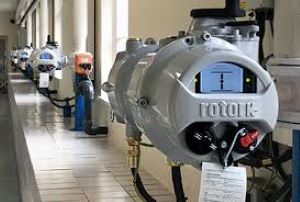Pearson May Financial Update: National Insurance and Minimum Wage increases kick in for businesses

As announced in the Autumn Budget last October, the planned changes to National Insurance rates and thresholds have now come in to effect – from 6 April – as well as changes to the National Minimum Wage.
Both these measures will potentially be very costly to businesses, so it is important to be fully aware of the implications and the changes introduced.
Pearson May partner Matthew Rutter takes a look in a little more detail at these measures and some others affecting business owners as the new tax year starts.
Employer’s National Insurance increases
The employer rate of National Insurance Contributions (NICs) has increased from 13.8% to 15% from 6 April 2025, while the main rate of employee NICs has remained unchanged at 8%.
Furthermore, the Secondary Threshold (the point at which employers become liable to pay NICs on an individual employee’s earnings), which was set at £9,100 a year for 2024/25, has reduced to £5,000 a year from 6 April 2025 until 6 April 2028.
Prior to 6 April 2025, the NIC Employment Allowance allowed businesses with employer NICs bills of £100,000 or less in the previous tax year to deduct £5,000 from their employer NICs bill.
From 6 April 2025, the Government has increased the Employment Allowance from £5,000 to £10,500 and removed the £100,000 threshold for eligibility, expanding this to all eligible employers with employer NIC bills.
The increase to the Employment Allowance will help some smaller businesses and may mitigate the increases in the rate of employer’s NICs, as well as the reduction in the Secondary Threshold. But for many businesses, the 1.2% increase in the rate, coupled with the significant reduction in the threshold to £5,000, will outweigh the benefit of the increased Employment Allowance.
National Living Wage and National Minimum Wage
The previously announced increased rates of the National Living Wage (for those aged 21 and over) and National Minimum Wage (NMW, for those of at least school leaving age) have come into force from 1 April 2025. The rates which now apply are as follows:
- National Living Wage £12.21 per hour
- NMW (aged 18-20) £10.00 per hour
- NMW (aged 16-17) £7.55 per hour
- NMW (Apprentices) £7.55 per hour
The apprenticeship rate applies to apprentices under 19, or 19 and over in the first year of apprenticeship.
Some other changes
- From 1 April 2025 for Corporation Tax purposes, and 6 April 2025 for Income Tax purposes, double cab pick-up vehicles (DCPUs) with a payload of one tonne or more are treated as cars for the purposes of capital allowances, benefits in kind and some deductions from business profits. The existing capital allowances treatment will apply to those who purchased DCPUs before April 2025. Transitional benefit in kind arrangements will apply for employers that have purchased, leased, or ordered a DCPU before 6 April 2025. They will be able to use the previous treatment until the earlier of disposal, lease expiry, or 5 April 2029.
- While the main rates of Capital Gains Tax (CGT) on assets other than residential property and carried interest were increased with effect from 30 October 2024, the rate applying to individuals claiming Business Asset Disposal Relief (BADR) or Investors’ Relief, increased from 6 April 2025. As a result, the rate of CGT payable by those selling their business – or other assets qualifying for BADR – increased from 10% to 14% for disposals made on or after 6 April 2025. The rate will increase again to 18% for disposals made on or after 6 April 2026.
The above is for general guidance only and no action should be taken without obtaining specific advice.








